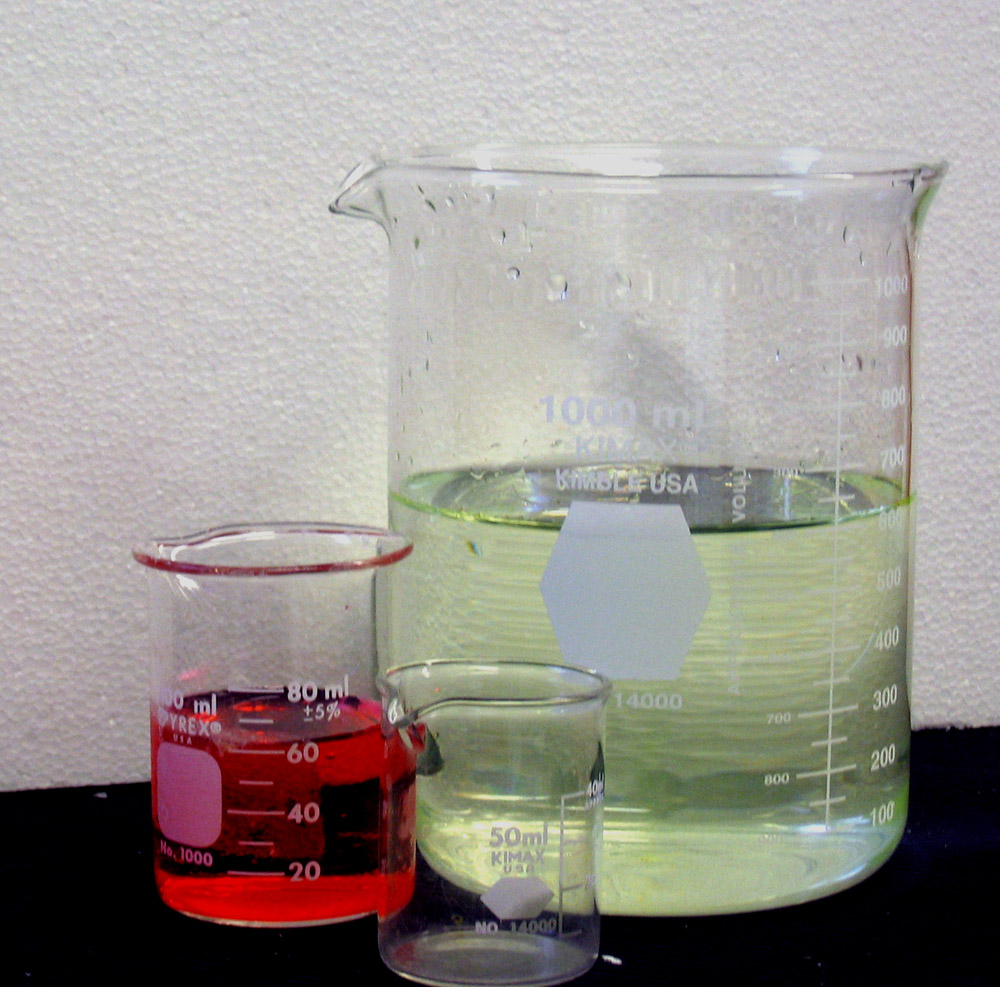- Beaker (glassware)
Infobox Laboratory equipment
name = Beaker
|thumb|200px
caption = Beakers of several sizes
uses = Liquid volume containment and measurement
related =Fleaker A beaker is a simple container for stirring, mixing and heating liquids commonly used in many laboratories. Beakers are generally cylindrical in shape, with a flat bottom. Beakers are available in a wide range of sizes, from one
millilitre up to severallitre s.They may be made of glass (very often
borosilicate glass ) or of variousplastics . Beakers used for holding solutions ofcorrosive chemicals such asacid s or other highly reactive chemicals, are often made ofPTFE or other low reactivity materials. Beakers have a cylindrical shape, with flat bottoms so that that they can be set onto many different types of surfaces, and they usually have a thick top (lip) with a spout to make it easier to pour liquids.Beakers may be covered, perhaps by a
watch glass , to prevent contamination or loss of the contents. Beakers are often "graduated"—marked on the side with lines indicating the volume contained. For instance, a 250 mL beaker might be marked with lines to indicate 50, 100, 150, 200, and 250 mL of volume. The accuracy of these marks can vary from one beaker to another.The standard tall form graduated beaker is sometimes referred to as aBerzelius beaker.A beaker is distinguished from a flask by having sides which are straight rather than sloping. The exception to this definition is a slightly conical sided beaker is called a Phillips beaker.Beakers are used more often in general chemistry than flasks.Fact|date=June 2008
ee also
*
Fleaker
*Stirring rod
Wikimedia Foundation. 2010.
